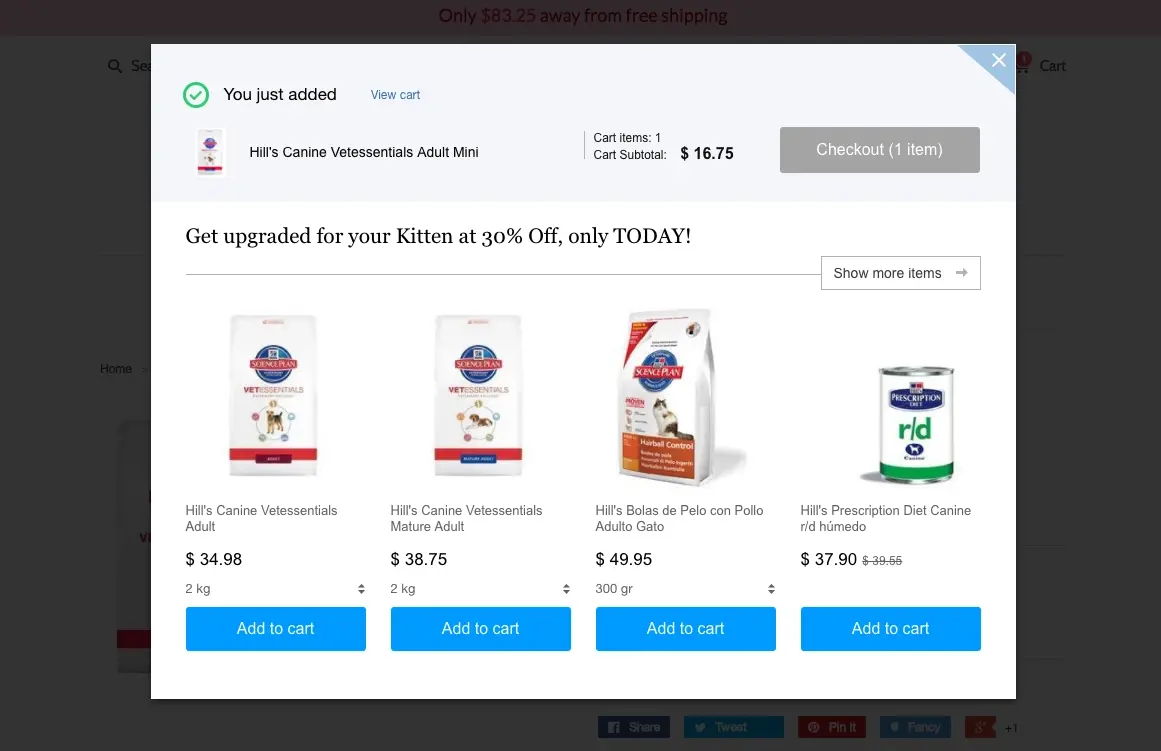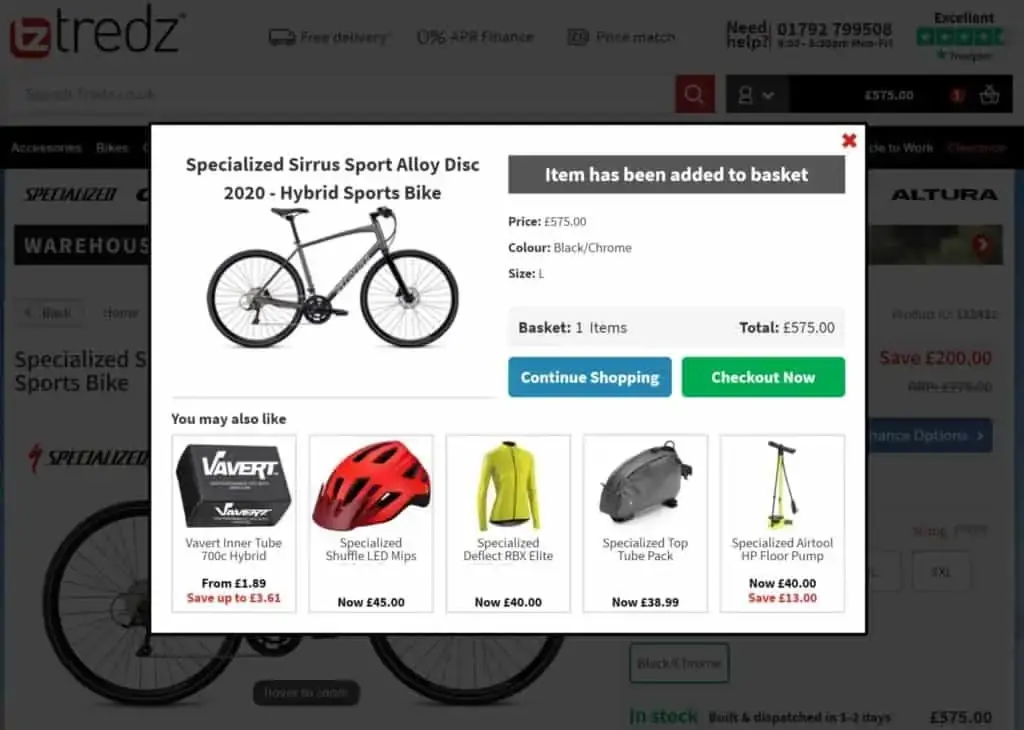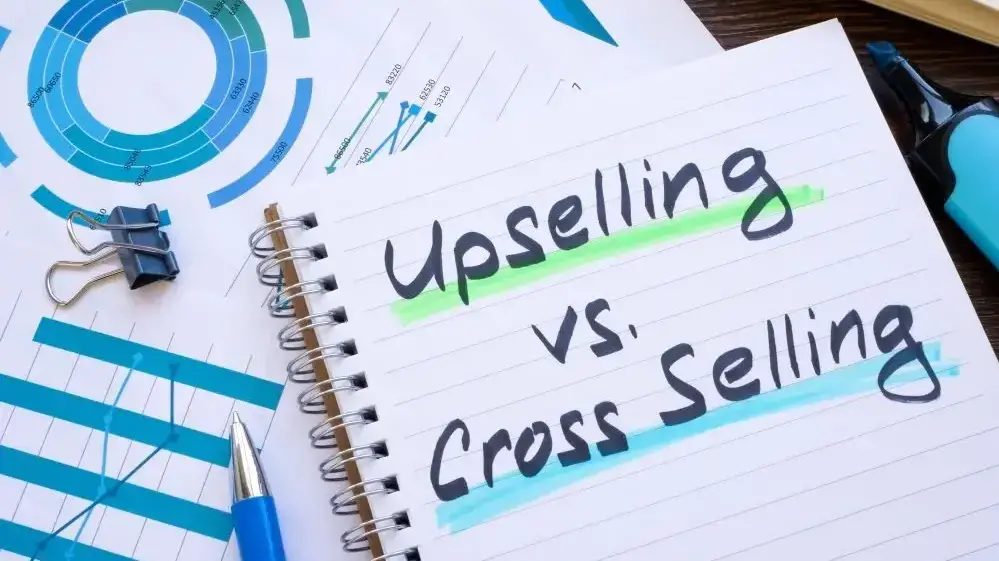Selling isn’t just about getting people to buy. It’s about getting them to buy more and buy smarter. Whether you’re shopping online, ordering food, or upgrading your phone, businesses are constantly using strategies to increase your total spend. Two of the most common tactics used are upselling and cross-selling.
Think about this: You walk into a Starbucks and order a regular latte. The barista asks, “Would you like to make that a grande for just 50 cents more?” That’s upselling! Convincing you to get a bigger, better version of what you wanted.
Now, imagine you’re buying sneakers at Nike. Right before checkout, the salesperson says, “Would you like to add a pair of socks or a shoe cleaner?” That’s cross-selling! Suggesting extra products that complement your purchase.
Businesses use these strategies to increase revenue, improve customer experience, and maximize every sale. Some companies rely on upselling, some focus on cross-selling, and the smartest ones use both to boost profits.
But what’s the real difference between the two? And how can businesses use them effectively? Let’s break it down in the simplest way possible.
What is Upselling?
Upselling is a sales technique where a business encourages a customer to buy a more expensive or upgraded version of the product they’re already considering.
Instead of selling something completely different, the goal is to convince the customer to spend a little more for better features, higher quality, or additional benefits.
It is about showing value. A customer is already willing to buy something, meaning they’ve made the decision to purchase, but with the right pitch, they might spend more on a premium option. The key is to make the upgrade seem logical, beneficial, and worth the extra cost.

Businesses use different methods to upsell effectively:
Feature comparison: Showing side-by-side differences between a standard and premium product.
Price anchoring: Positioning a slightly more expensive option as a “better deal.”
Highlighting benefits: Emphasizing why the upgrade is worth it (e.g., better durability, longer battery life, or more storage).
What is Cross-Selling?
Cross-selling, on the other hand, is a sales technique where a business encourages a customer to buy related or complementary products alongside their main purchase.
Instead of upgrading the existing product (like upselling), cross-selling focuses on adding useful extras that enhance the customer’s experience.
The idea behind cross-selling is simple: If a customer already needs one product, they might also need something that goes with it. Businesses take advantage of this by recommending relevant items at the right moment.

Some common ways cross-selling happens:
Bundling related products together: Selling a main item with must-have accessories.
Suggesting useful add-ons: Offering something that improves or protects the main product.
Showing "frequently bought together" items: Encouraging customers to get what others usually purchase with the same product.
Key Differences Between Upselling & Cross-Selling
Both upselling and cross-selling encourage customers to spend more, but they work in different ways. Upselling focuses on getting the customer to buy a better version of the product they’re already considering, while cross-selling suggests related products that enhance their purchase.
Here is a table to help you better understand the difference between both sales techniques:
| Factor | Upselling | Cross-Selling |
|---|---|---|
| Goal | Convince the customer to upgrade to a higher-end version of the product. | Encourage the customer to buy extra products that complement their purchase. |
| Focus | Improves quality — a better version with more features or performance. | Increases quantity — adds more items to the order. |
| How It Works | Shows the benefits of upgrading to a premium model. | Suggests useful add-ons that go well with the main item. |
| Customer Benefit | Helps them get better value from a superior product. | Makes their purchase more complete and convenient. |
| Best Used In | High-ticket industries like tech, electronics, cars, and premium services. | Everyday shopping like retail, e-commerce, food service, and software. |
Both techniques work well when used strategically. The key is making the offer feel helpful, not pushy, so the customer sees the value in spending more.
How to Upsell Effectively
We now agree that upselling is about helping buyers make a better choice that benefits both them and the business. But this needs to be done right so it feels natural, adds value, and increases customer satisfaction.
Here’s how businesses can upsell effectively without being pushy.
1. Offer an Upgrade That Genuinely Adds Value
Customers won’t upgrade unless they see a clear benefit. The upgraded product must solve a problem, offer better performance, or provide something worth paying extra for.
If selling laptops, highlight a model with more storage and a better processor for smoother performance.
In a restaurant, a larger meal should come with more toppings, sides, or a better deal per portion.
If upselling a subscription, offer features that genuinely enhance the experience, like premium support or exclusive content.
The key is making the customer feel that they’re not just spending more—they’re getting more.
2. Use Price Anchoring to Make the Upgrade Look Like a Smart Deal
Price anchoring is a strategy where you position the upgraded product as the best value by comparing it to a lower-tier version.
If a customer is considering a $50 plan, show them a $70 plan that offers double the benefits, making it seem like a smarter choice.
On product pages, show a side-by-side comparison highlighting what the upgrade includes.
In retail, place the premium product next to the standard one to subtly encourage an upgrade.
When people see the small price difference but big benefits, they’re more likely to go for the higher-tier option.
3. Keep the Price Increase Reasonable
The jump from the standard product to the premium one should feel like a logical step, not a big leap.
A 10-30% price increase is easier to justify than a 100% jump.
Instead of pushing a luxury version immediately, suggest a mid-tier upgrade that feels within reach.
Use phrases like “For just $10 more, you get double the benefits” instead of focusing on the total price.
A slight increase that feels like a bargain is much more effective than pushing an expensive premium option too aggressively.
4. Recommend the Upgrade at the Right Time
Timing matters. The upsell should appear when the customer is already interested and ready to buy.
In e-commerce, show the upgrade on the product page before checkout, not after they’ve made up their mind.
In retail, have staff suggest an upgrade when the customer is actively choosing between options.
For subscription services, offer the upsell after they’ve seen the benefits of the free/basic version.
Customers are more open to spending extra when they’re already in buying mode.
5. Use Social Proof to Make the Upgrade More Appealing
People trust what others are buying. If they see that most customers prefer the upgraded version, they’re more likely to choose it too.
Label the premium option as “Best Seller” or “Most Popular Choice”.
Show customer reviews that mention why the upgrade was worth it.
Use testimonials or case studies proving the real benefits of choosing the premium option.
When customers feel like they’re making the same smart choice as others, they’re more likely to follow suit.
6. Create Limited-Time Upsell Offers
A sense of urgency can push customers to act now instead of thinking about it later.
Offer an upgrade discount for a limited time: “Upgrade today and get 20% off!”
Bundle a premium product with a freebie if they upgrade now.
Use time-limited messaging: “Last chance to upgrade before checkout!”
When customers feel like they’ll miss out on a deal, they’re more likely to take the offer.
7. Train Sales Teams to Upsell Naturally
For businesses with direct customer interactions, the way an upsell is presented makes all the difference.
Staff should explain the benefits rather than just pushing a more expensive option.
The upsell should feel like a personalized recommendation, not a generic sales pitch.
Instead of saying, “Do you want the premium version?”, say “For just $15 more, you get double the battery life—many customers find this useful for travel.”
A well-trained team can increase upsell success rates without making customers feel pressured.
How to Cross-Sell Effectively
Cross-selling works best when it feels helpful rather than salesy. Customers are more likely to buy additional products if they genuinely improve their purchase. Here’s how businesses can cross-sell effectively without overwhelming or annoying customers.
1. Recommend Products That Are Actually Relevant
Customers will only consider cross-sells if they make logical sense with their main purchase. The best cross-selling recommendations are things that enhance, protect, or improve the original product.
If someone buys a phone, suggesting a case and screen protector makes sense.
If they order a coffee, offering a pastry is a natural pairing.
If they subscribe to streaming software, offering a higher-tier package with extra features is relevant.
The key is to make the customer feel like they need it, not that they’re being pushed into buying more.
2. Introduce Cross-Sells at the Right Moment
Timing matters in cross-selling. If done too early, the customer isn’t ready. If done too late, they may have already made their decision.
Before checkout: Show recommended add-ons before the customer finalizes their purchase. E-commerce sites do this with “Frequently Bought Together” suggestions.
After purchase confirmation: A well-timed “You may also like” email can convince customers to add complementary products later.
During customer inquiries: If someone asks about a product, it’s a great time to suggest useful extras that others typically buy with it.
The best cross-selling happens when the customer is already in buying mode, making it easier to say yes.
3. Bundle Products for an Attractive Offer
Customers love deals, and bundling cross-sell items together makes them more tempting.
Instead of selling a camera, lens, and tripod separately, offer a discounted photography bundle.
Restaurants can create a meal combo instead of listing items separately.
Online courses can offer discounted add-on lessons when purchasing the main course.
When the cross-sell feels like a better deal than buying items separately, customers are more likely to take it.
4. Keep It Simple — Don’t Overwhelm the Customer
Too many choices can make customers feel pressured or confused. The best cross-sells focus on one or two well-matched suggestions rather than a long list.
Instead of showing ten related items, highlight the top one or two that most customers buy.
Use clear messaging like “Complete your setup with this!” instead of bombarding customers with options.
Avoid making checkout feel like a sales pitch—too many suggestions can backfire.
A focused recommendation makes the decision easier and feels more natural.
5. Use Social Proof to Reinforce the Recommendation
Customers trust what other people are buying. Social proof can make a cross-sell feel like a smart choice rather than a sales tactic.
Show messages like “80% of customers also bought this” to build trust.
Display customer reviews for recommended add-ons.
Use phrases like “Our best-selling accessory for this product” to boost credibility.
When customers see that others find the cross-sell useful, they’re more likely to add it to their purchase.
6. Offer Limited-Time Cross-Sell Deals
A sense of urgency can push customers to make a quick decision rather than leaving it for later.
Offer a discount on add-ons only if purchased together with the main product.
Show limited-time messaging like “Bundle now and save 15%” to encourage immediate action.
Use countdown timers or “Today only” deals for cross-sell promotions.
When customers feel like they might miss out on a good deal, they’re more likely to act fast.
7. Make Cross-Selling Part of Customer Support
Cross-selling isn’t just for checkout—it can be integrated into customer service interactions to solve customer problems while boosting sales.
If a customer buys furniture, recommend an assembly service to make their experience easier.
If they buy a laptop, suggest extended warranty or premium support during a service call.
If they sign up for software, offer an add-on feature that improves functionality.
Cross-selling should feel like a helpful recommendation, not just a way to get more money. When positioned as a way to enhance the customer’s experience, they’re more likely to accept it.
Final Thoughts
The key to success is making your offers feel helpful, relevant, and valuable, rather than just a sales tactic.
Whether it’s a small upgrade or a well-matched add-on, businesses that master these techniques don’t just sell more — they build stronger customer relationships and encourage repeat purchases.
By focusing on timing, relevance, and genuine value, upselling and cross-selling can turn a one-time buyer into a loyal customer who trusts the brand’s recommendations.
Frequently Asked Questions
What role does cross-selling and upselling play in maximising revenue?
Cross-selling and upselling encourage customers to explore additional offerings, increasing the average transaction value and overall revenue.
Can reseller hosting increase my domain sales?
Yes, reseller hosting can enhance domain sales by allowing you to manage multiple domains efficiently, bundle hosting with domain sales, and provide a professional service to your clients.
How Can Small Businesses Benefit from E-Business?
Small businesses can benefit from E-Business through global reach, cost efficiency, and improved customer engagement. Digital platforms provide access to a broader customer base, reduce operational costs, and enable direct communication with customers.
How much should I charge my customers?
Well, as the old rhetorical goes: how long is a piece of string? This decision is entirely yours to make as we’re not involved in the relationships with your customers; we just resell our systems to you. Besides providing management and support, we don’t interfere any further.
If you’re unsure, you’ll no doubt benefit from doing some market research, assessing what your competition is charging, as well as what your operational costs are.
Finding the right price might not come to you instantly, but you should be able to ascertain a minimum price in order to make your new reseller hosting venture profitable.

Joel Olawanle is a Software Engineer and Technical Writer with over three years of experience helping companies communicate their products effectively through technical articles.
View all posts by Joel Olawanle




















